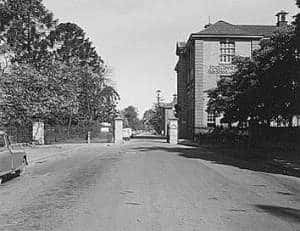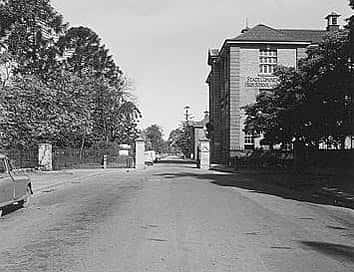
Name: State Commercial High School and College
Time: 1933 - 1962
Epoch: Early 20th Century
Category: State High School
Institution Category: Education
Institution Group: Secondary
Coordinates: -27.4709824, 153.0235762
Street Address: George Street, Brisbane City
Suburb: Brisbane City (CBD)
Sector: State
Local Study Area: Spring Hill-CBD-Fortitude Valley-New Farm (Inner City)
Study Stage: MBNH Stage 9 Local Study Areas
State Commercial High was established as a department of the Central Technical College in 1910, and received status as a State High School in the 1920s. Due to rationalisation of the technical schools the High School closed in 1963. Subsequently, the State Commercial College was expanded, taking on the curriculum of the former State Commercial High School, as well as providing diploma and certificate level courses. The State Commercial High School began around 1949 as part of the chain of educational institutions that went back to Central Technical College which opened in 1914. The major part of the educational program was evening classes in commercial subjects which allowed day workers an opportunity for qualifications that allowed advancement or changing of a career. In 1949 there were 1,772 students in first term and subject enrolments totalling 4,034. Secondary Education in Queensland, outside the privileged provisions of the 1860 Grammar Schools Act, did not start until 1912, with the state undertaking to establish free high schools in places with a likely attendance of 25 qualified students, provided that there was no other provision for State-aided secondary education (such as grammar schools) in these places. Even so, secondary education in Queensland was not substantively provided (outside of Grammar and other class-based schools) until the first suburban, multilateral (offering a variety of courses) State high schools were opened in Brisbane; at Wynnum in 1942 and Cavendish Road in 1952. Several state reviews were generated by the great disappointment the community had of the state system, including transitions from primary to secondary education, and the transitions from secondary to tertiary education. Historically, the Queensland education system had been under pressure from instrumental policies which prioritised towards the state’s old agrarian and emerging industrial economy.
The Watkin Committee believed years of compulsory schooling should be coupled with a reduction in the age of transfer from primary to secondary school and the provision of new secondary curricula. These recommendations were largely implemented under the Education Act of 1964. Under this Act, secondary school curricula and examinations became the responsibility of two new administrative bodies, the Board of Junior Secondary School Studies and the Board of Senior Secondary School Studies. During the second half of the 1960s these Boards kept the Junior and Senior syllabuses and examinations under constant review, in an effort to cater for the wider range of abilities and future vocations of the students then entering the secondary school. In some cases, as in certain of the Senior science subjects, such as physics, biology and chemistry, completely new courses were introduced.
The Radford Committee, appointed in 1969, to review the system of public examinations for Queensland secondary school students and to make recommendations for the assessment of students’ achievement, suggested in its 1970 report that public examinations be replaced by a system of internal school assessment. The Radford Committee’s recommendations were enacted in the Education Act Amendment Act (No.2) of 1970. Consequently, the Junior and Senior examinations, first held in 1910, were held for the last time in 1970 and 1972 respectively. The Scholarship examination, first held in 1873, was held for the last time in 1962, and in 1963 Grade 8 became a part of secondary schooling. These changes meant that no Queensland school student in 1973 was required to sit for a public examination. The century long reign of the public examination was over. Freed from the constraints of public examinations, syllabuses could now be significantly revised and teachers given much more freedom in interpreting and teaching them. Overall responsibility for implementing the Radford proposals was given to a Board of Secondary School Studies established in 1971. Between 1971 and 1978, 70 new syllabuses were written, trialled, piloted, brought into full operation and in some cases revised.
Geographic Description 1: Inside The Green Belt
Geographic Description 2: Brisbane River
Geographic Description 3: Flood Plains (Major); High River Banks (still floods); Ridgeline (Slopes off Wickham Tce)
Kowald, Margaret. with Val Donovan, Ruth Kerr, Kay Cohen, Lyndsay Smith, and Jean Stewart. Lost Brisbane and Surrounding Areas: The Later Years. Volume 2. RHSQ. 2016 page 230; Queensland State Archives Agency ID6219, State Commercial High School; Entry extracted from Queensland Department of Education document, Secondary Education, undated.
State Commercial High School, October 1953.BCC-B54-4272. Brisbane City Council
